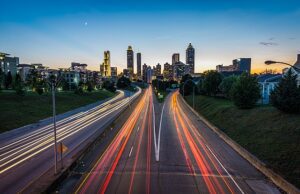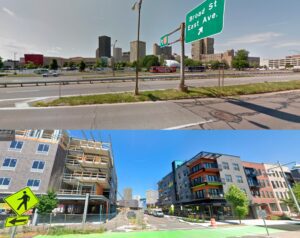 On January 31, Harvard and Stanford Universities released the Education Recovery Scorecard, an assessment of student achievement following the COVID-19 pandemic learning loss.1 The report detailed the gains third- through eighth-grade students in 8,000 school districts across the country have made in their math and reading scores.2 The Education Recovery Scorecard results show that there has been significant recovery in these two subjects, though more needs to be done to help students reach basic levels of proficiency.
On January 31, Harvard and Stanford Universities released the Education Recovery Scorecard, an assessment of student achievement following the COVID-19 pandemic learning loss.1 The report detailed the gains third- through eighth-grade students in 8,000 school districts across the country have made in their math and reading scores.2 The Education Recovery Scorecard results show that there has been significant recovery in these two subjects, though more needs to be done to help students reach basic levels of proficiency.
Students struggled when schools closed and pivoted to remote learning. These disruptions had real effects on students’ ability to learn foundational skills in the classroom. Last summer, I wrote about the National Report Card decline in history and civics scores in the 2022 National Assessment of Educational Progress (NAEP). Reading scores were also down three points, mirroring scores from 30 years prior.3 Math scores dropped five to eight points, their largest decline since the test began in 1990.4 During the pandemic years, students lost an average of half a year of learning; since then, they have recovered only between a quarter and a third of that time.5 This can have a compounding effect; once you’re behind, it’s easy to fall even further behind unless there’s serious intervention.
Signs of Student Improvement
The 2023 data gives reason to be optimistic about the post-pandemic learning loss recovery. While the 2022 NAEP scores were historically bad, the Education Recovery Scorecard shows that, rather than continue to decline, math and reading scores have actually started to increase. Even with these gains, many states’ scores still fall well below the national average and students still struggle to reach the proficiency levels for their grades. Only one state, Alabama, has surpassed its pre-pandemic math levels, while only Illinois, Louisiana, and Mississippi have reached their pre-pandemic reading levels.6 Those pre-pandemic scores were often not great to begin with, so despite the improvements, students are still generally underperforming in both subjects.
The pandemic worsened existing inequalities, widening the achievement gaps between richer and poorer students. Students from richer school districts scored higher and made stronger improvements than students from poorer ones.7 Even within the same school district, this was true for richer families and poorer families.8 During the pandemic, students who were behind in math and reading fell even further behind. Low scores sunk even lower. As scores recovered this past year, students with lower scores faced an even deeper hole to climb out from—one that they are still stuck in today.
Reasons for the Pandemic Learning Loss Recovery
It was feared that the pandemic would permanently leave students behind—that once they lost learning time, they would never be able to fully make it up. However, the return to in-person instruction and innovative methods by teachers, administration, and school districts have succeeded in starting to get students back on track.
Schools have cut down on truancy, expanded tutoring opportunities, implemented after-school and summer school programs, and even increased the length of the school day.9 “This did not happen by accident,” said Adrienne Battle, director of Metro Nashville Public Schools, whose students scored among the highest in math and reading according to the Education Recovery Scorecard. “Many, many people were involved at all levels across the district.”10
Though most education decisions are made at the local and state levels, the federal government sets goals and provides some funding to support schools. The actions schools have already taken, with much success, align with three major educational goals set last month by President Joe Biden’s administration: increasing school attendance, providing high-dosage tutoring, and increasing summer learning and after-school learning time.11
Schools across the country have also made use of federal funds—more than $122 billion—to aid in their recovery, though these funds will run out in the fall.12 There’s always a need for more money, more time, and more resources, especially now as many public schools find themselves underfunded and struggling to support their students.13
Continuing the Trend
What a student learns and achieves today affects their quality of life in the long run. Low scores can correlate to lower wages, fewer opportunities, and a higher likelihood of unemployment or incarceration later in life.14 That’s on top of the challenges students currently face in the wake of the pandemic: increased levels of stress, anxiety, and loneliness.15
Educational achievement impacts the U.S. economy and our ability to advance and compete as a nation. On a global level, math scores for 15-year-olds ranked 28th out of 37 among similarly industrialized countries from the Organisation for Economic Co-operation and Development.16 There will always be a need for skilled workers and a well-educated population that can think critically, analyze information, and problem-solve to improve their own lives and their communities. Without these foundational skills, individual people—and the country—fall behind.
The results of the Education Recovery Scorecard show that learning loss recovery is possible when multiple groups of decision-makers prioritize childhood education as the urgent issue it is. The improvements we’ve seen are good, but third- through eighth-grade students are generally still lagging behind. “We’re slowly recovering,” said former Secretary of Education Margaret Spellings, “but not fast enough.”17 Students still have a long way to go to reach basic levels of understanding in math and reading. This is just the first step in helping students make up what they lost so they can ultimately meet and exceed the proficiency standards for their grade levels. Schools must maintain this momentum with sustained support to accelerate this upward trend.
Discussion Questions
- Does your school offer any additional resources to help support students who may be struggling in math or reading?
- Check out the New York Times resource below. Is your school district’s data included? What does it look like compared to the average scores of your state?
- The Biden administration set three goals to improve student achievement: increasing school attendance, providing high-dosage tutoring, and increasing summer learning and after-school learning time. Can you think of additional ways to support student learning, both inside and outside the classroom?
- Should Congress provide more federal funds to help students recover from the learning loss? If so, what programs, trainings, or resources should those funds go toward?
Other Resources
- To read the full report from the Education Recovery Scorecard, see The First Year of Pandemic Recovery: A District-Level Analysis.
- To explore your school district’s 2023 math test scores compared to your state average, see the New York Times interactive resource: See How Your School District Is Recovering From the Pandemic (some states are excluded based on limited or incomplete data).
- To see your state’s math and reading scores from the 2022 NAEP, see The Nation’s Report Card: Mathematics 2022 State Snapshot Reports and The Nation’s Report Card: Reading 2022 State Snapshot Reports.
Related Post
As always, we encourage you to join the discussion with your comments or questions below.
Close Up is proud to be the nation’s leading nonprofit civic education organization, working with schools and districts across the country since 1971. If you would like to partner with us or learn more about our experiential learning programs, professional development, or curriculum design and consulting, contact us today!
Sources
Featured Image Credit: Azul Sordo/The Texas Tribune
[1] Harvard University: https://educationrecoveryscorecard.org/wp-content/uploads/2024/01/ERS-National-Press-Release-2024013001.pdf
[2] Ibid.
[3] National Assessment of Educational Progress: https://www.nationsreportcard.gov/highlights/reading/2022/
[4] National Assessment of Educational Progress: https://nces.ed.gov/nationsreportcard/mathematics/
[5] New York Times: https://www.nytimes.com/interactive/2024/01/31/us/pandemic-learning-loss-recovery.html
[6] Harvard University: https://educationrecoveryscorecard.org/wp-content/uploads/2024/01/ERS-Report-Final-1.31.pdf
[7] New York Times: https://www.nytimes.com/interactive/2024/01/31/us/pandemic-learning-loss-recovery.html
[8] Ibid.
[9] Ibid.
[10] The Tennessean: https://www.tennessean.com/story/news/education/2024/02/13/nashville-schools-rank-top-nation-math-reading-recovery-after-pandemic/72584619007/
[11] The White House: https://www.whitehouse.gov/briefing-room/statements-releases/2024/01/17/fact-sheet-biden-harris-administration-announces-improving-student-achievement-agenda-in-2024/
[12] New York Times: https://www.nytimes.com/interactive/2024/01/31/us/pandemic-learning-loss-recovery.html
[13] Economic Policy Institute: https://www.epi.org/publication/public-education-funding-in-the-us-needs-an-overhaul/
[14] New York Times: https://www.nytimes.com/interactive/2024/01/31/us/pandemic-learning-loss-recovery.html
[15] CNN: https://www.cnn.com/2023/06/07/health/anxiety-kids-medication-therapy-wellness/index.html
[16] New York Times: https://www.nytimes.com/2023/12/05/us/math-scores-pandemic-pisa.html
[17] New York Times: https://www.nytimes.com/interactive/2024/01/31/us/pandemic-learning-loss-recovery.html

 On Sunday, February 4, a bipartisan group of senators unveiled a compromise bill intended to address border security concerns and to provide further funding for Ukraine’s military defense against Russia.1 In this post, we will examine the immigration-related contents of the compromise legislation and explore different perspectives about the border security bill.
On Sunday, February 4, a bipartisan group of senators unveiled a compromise bill intended to address border security concerns and to provide further funding for Ukraine’s military defense against Russia.1 In this post, we will examine the immigration-related contents of the compromise legislation and explore different perspectives about the border security bill. Student Symposium: Forging Future Leaders
Student Symposium: Forging Future Leaders NNSP Annual Conference: Equipping Educators for Impactful Learning
NNSP Annual Conference: Equipping Educators for Impactful Learning Close Up and NNSP Impact: Fostering Civic Engagement
Close Up and NNSP Impact: Fostering Civic Engagement Amidst the mosaic of national debates surrounding climate change, economic justice, and public health, there is a growing focus on the intersection of these issues and the design of our communities. The overwhelming majority of U.S. households own at least one vehicle, and the number of vehicles registered in the United States has continued to rise in recent years.1 Some argue that car dependency is a symptom of the design of American cities, others argue that it’s the cause.
Amidst the mosaic of national debates surrounding climate change, economic justice, and public health, there is a growing focus on the intersection of these issues and the design of our communities. The overwhelming majority of U.S. households own at least one vehicle, and the number of vehicles registered in the United States has continued to rise in recent years.1 Some argue that car dependency is a symptom of the design of American cities, others argue that it’s the cause.







